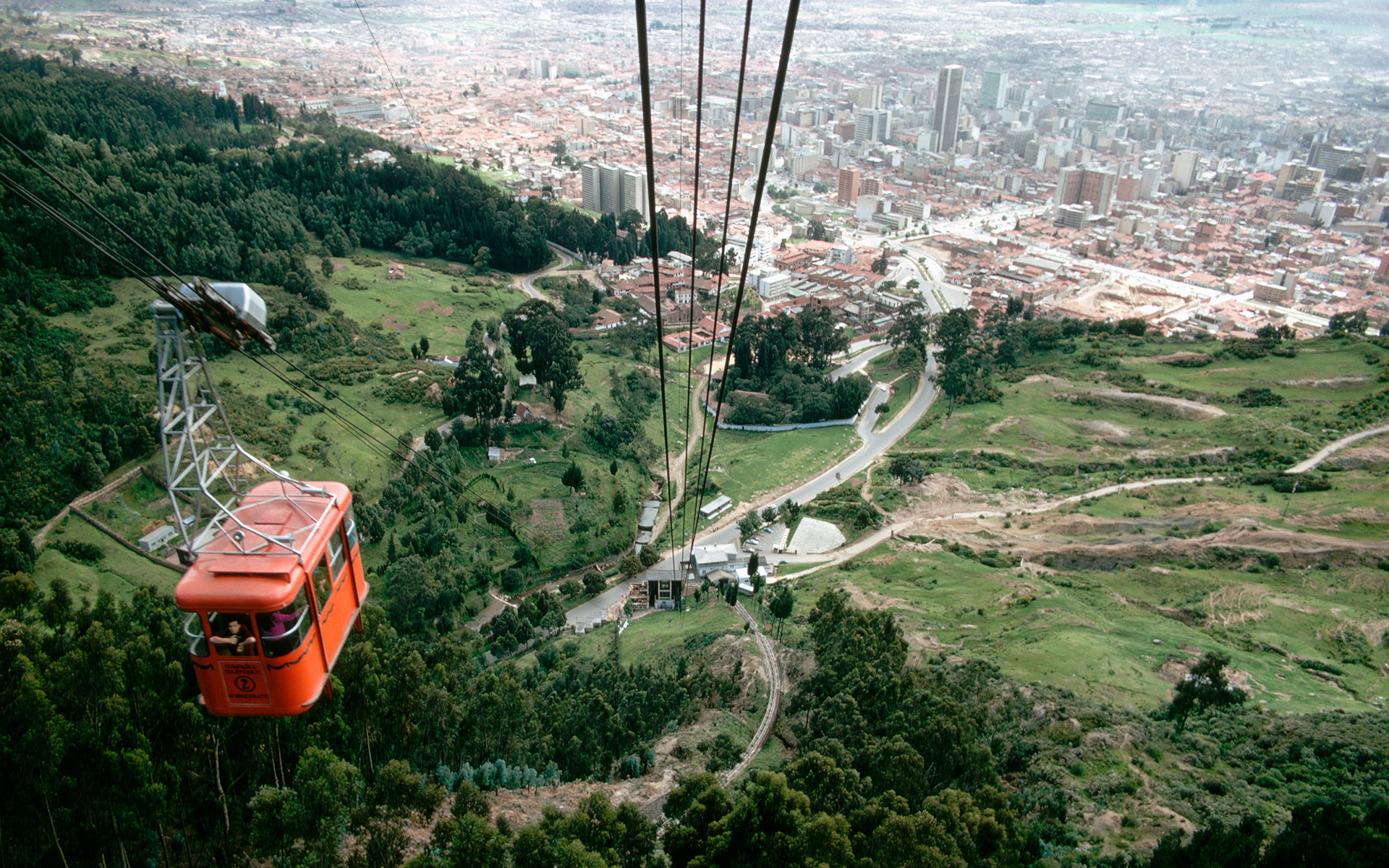A major air cargo and transit hub for South America, the city has an opportunity to expand its role and connectivity via new investments.
City Class Score
| Commercial Hubs | |
| Export Champions | |
| Mobility Connectors | |
| Climate Resilient |
Corporate HQs, MNC presence, branded outlets, hotels, manufacturing, start-up ecosystem,
transport linkages, population, and income.
Go to the class information
Manufacturing, industrial parks, export share and share change by category, air and port
infrastructure, freight time to market, trade agreements, and expert interviews.
Go to the class information
Passenger traffic, flight connectivity, air-cargo flights, port infrastructure, container
ship sailings, and major road networks.
Go to the class information
Coastal and river flooding, extreme rain, extreme heat and humidity, cyclones, and water
scarcity.
Go to the class information
Flying into Bogotá provides a breathtaking view of the city’s sprawling
districts. The iconic peaks of Monserrate and Guadalupe loom over the urban landscape, a lush green
contrast to the sprawl below. As Bogotá’s neighborhoods come into view, you might spot the colorful
facades of La Candelaria, the city’s historic heart with its cobblestone streets and colorful
colonial buildings, as well as the city’s newer skyscrapers. A view of the city from 2,500 feet is
appropriate given that Bogotá has emerged as one of South America’s biggest aviation hubs, receiving
a constant flow of flights.
Bogotá’s megatrend opportunities are less immediate than Bangkok’s
or Dubai’s,
as supply chain rebalancing is currently more focused in Mexico than countries in South America.
However, the latter will eventually benefit from a reconfiguring of global supply to the benefit of
Bogotá’s air cargo hub. Tourism is also a bright spot, with a growing number of travelers from Asia
and the Middle East arriving in transit to other parts of South America as well as visiting
Colombia.
Bogotá’s air cargo industry leads the region, in part benefiting from the
country’s large cut-flower industry, similar to Nairobi,
with flowers shipped by air. The city’s El Dorado International Airport is a hub for moving cargo
between North and South America, and the country’s signing of an air protocol agreement with the
United States permitting US air carriers to fly all-cargo services between Colombia and a third
nation only enhances its position. Compared with other regional mobility hubs, Bogotá shares some
similarities with Addis Ababa, which has similarly developed into a major aviation hub for
sub-Saharan Africa.
Bogotá also serves a growing number of passengers traveling between
North and South America as one of the region’s busiest flight hubs. The country’s fast-growing
tourism sector is also contributing to rising arrivals from traditional markets in the United States
and South America, as well as new markets in Europe, with more than 1 million foreign tourists
visiting the city in 2023. But capacity constraints are a growing challenge, and the city will need
to invest further in its aviation sector to grow. Plans to increase capacity at the city’s
international airport, dubbed “El Dorado Max,” have been announced, but there is still work ahead.

